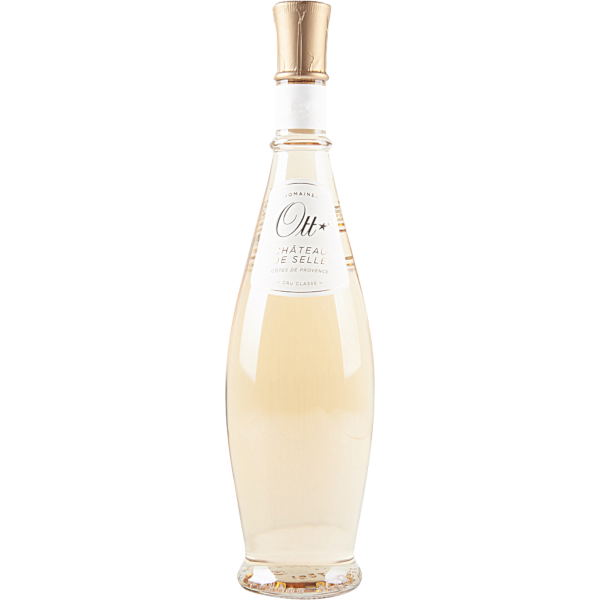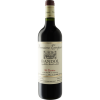-
×
 2017 Johanneshof Reinisch Thermenregion St. Laurent Ried Holzspur 750ML
1 × $76.99
2017 Johanneshof Reinisch Thermenregion St. Laurent Ried Holzspur 750ML
1 × $76.99 -
×
 2022 Gini Soave Classico
1 × $21.00
2022 Gini Soave Classico
1 × $21.00
2019 Domaines Ott Rose Chateau De Selle
$47.33
Out of stock
SKU: 2418492
Categories: 2019, 750ML, Domaines Ott Cote De Provence, France, Rose
2019 Domaines Ott Rose Chateau De Selle
2019 Domaines Ott Rose Chateau De Selle This pale pink wine with golden tints releases fragrances of citrus fruit and orchard flowers enveloped in spice. On the palate, the immediate effect is elegant and open, developing subtle aromas with a lemony edge before a sweet finish of appealing length. This wine pairs excellent with all Mediterranean cuisine.
In the world of wine, rosé has it easy: If it’s pink and pretty, it’s already on its way to being well accepted. Rarely does a rosé jump out of the glass and demand attention. But this one seems to have packaged up a Mediterranean breeze along with the scents of strawberries and garrigue, unleashing it with every sip. My nine-year-old, doing her own independent appraising, said, “It smells warm—not like the wine is warm, but like it comes from a warm place.” That place is inland from the Gulf of Saint-Tropez, 345 acres of stony soils and limestone terraces, a remote location Marcel Ott purchased in 1912. Today, cousins Christian and JeanFrançois Ott tend the vines, working with the backing of parent company Louis Roederer, which funded the building of a new winery at the estate in 2017, designed by Carl Fredrik Svenstedt.
Rosé
A rosé (from French, rosé [ʁoze]) is a type of wine that incorporates some of the color from the grape skins, but not enough to qualify it as a red wine. It may be the oldest known type of wine, as it is the most straightforward to make with the skin contact method. The pink color can range from a pale “onion-skin” orange to a vivid near-purple, depending on the grape varieties used and winemaking techniques. Usually, the wine is labelled rosé in French, Portuguese, and English-speaking countries, rosado in Spanish, or rosato in Italian.
There are three major ways to produce rosé wine: skin contact, saignée, and blending. Rosé wines can be made still, semi-sparkling or sparkling and with a wide range of sweetness levels from highly dry Provençal rosé to sweet White Zinfandels and blushes. Rosé wines are made from a wide variety of grapes and can be found all around the globe.
When rosé wine is the primary product, it is produced with the skin contact method. Black-skinned grapes are crushed and the skins are allowed to remain in contact with the juice for a short period, typically two to twenty hours. The grape is then pressed and the skins discarded, rather than left in contact throughout fermentation (as with red wine making). The longer the skins are left in contact with the juice, the more intense the color of the final wine.
When a winemaker desires to impart more tannin and color to red wine, some of the pink juice from the must can be removed at an early stage in what is known as the Saignée (from French bleeding) method. The red wine remaining in the vats is intensified as a result of the bleeding, because the volume of juice in the must is reduced, and the must involve in the maceration becomes more concentrated. The pink juice that is removed can be fermented separately to produce rosé.
The simple mixing of red wine into white wine to impart color is uncommon and is discouraged in most wine growing regions, especially in France, where it is forbidden by law, except for Champagne. Even in Champagne, several high-end producers do not use this method but rather the saignée method.
Related products
$77.00
2020 Jean-Claude Bachelet Saint-Aubin 1er Cru Blanc 2020 Jean-Claude Bachelet Saint-Aubin 1er Cru Blanc Aromas of sweet orchard fruit, dried white flowers, beeswax and freshly baked bread preface the 2020 Saint-Aubin 1er Cru Charmois, a medium to full-bodied, satiny and precise wine with a bright core of fruit, lively acids and a long, saline finish. [...]
$798.00
2020 Domaine des Lambrays Clos des Lambrays Grand Cru 2020 Domaine des Lambrays Clos des Lambrays Grand Cru, A fresh red, with black currant and black cherry flavors shaded by floral, iron, earth and spice elements. Fluid and on the elegant side, with a solid underlying framework of tannins. Turns a bit leaner on the [...]
Chardonnay
$32.00
2021 Jean-Marc Brocard Chablis Sainte Claire 2021 Jean-Marc Brocard Chablis Sainte Claire is tart, with notes of lemon oils and mango skin, as well as a bit of minty herbaceousness. On the palate, there are flavors of honey, tropical fruits just barely ripened, as well as a finish of bracing acidity. One of the most popular [...]
Chardonnay
$32.00
2022 Jean-Marc Brocard Chablis Sainte Claire 2022 Jean-Marc Brocard Chablis Sainte Claire is tart, with notes of lemon oils and mango skin, as well as a bit of minty herbaceousness. On the palate, there are flavors of honey, tropical fruits just barely ripened, as well as a finish of bracing acidity. One of the most popular [...]
 2022 Gini Soave Classico
2022 Gini Soave Classico 

